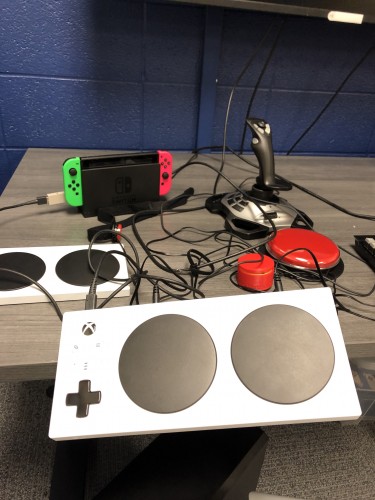On April 8th, I went to a workshop put on at the Design Lab’s PIE space - the Adaptive Gaming Workshop. It served not only to bring awareness ofto the accessibility issues in some games and gaming consoles, but also showcase the many ways communities and gaming console makers themselves are working to fix or work around these issues. It was eye-opening to see how many games are not accessible to all - either because of visuals and sound or because of the physical controller the gaming console uses. The workshop focused on these physical barriers to gaming and created an opportunity for those who might not be able to use the typical console controller - as well as those who are able but wanted to explore - to use the different adaptive controllers being developed and play these games. (It also gave people who could use conventional controllers an opportunity to explore these alternate methods of interacting with games) These included pedal controllers for those who have better movement in their feet than their hands, stick-shift like controllers that allowed one to move through a game without having to press direction arrows like infound on most controllers, and bigger buttons (than the little buttons in most controllers) that attach to a board in order to create a controller entirely made of buttons that can simply be pressed with your hand. Such devices are (which is especially good for those who don’t have much movement in their fingers and cannot use the small buttons).
The workshop was not only informative and fun, but also allowed people to create their own buttons. I learned how to solder a button that can be attached to an XBox board that can completely replace other controllers. This was especially interesting following a community night previous discussion at the Design Lab in which we played board games and then rated them in terms of different accessibility issues (like visual, sound, and mobility). The workshop and community night combined helped me learn that games that I had never given a second thought in terms of accessibility are actually not fully accessible, but also showed how many interesting adaptive methods are being developed.

Various adaptive methods for game consoles, including a modified joystick, XBox Adpative Controller, 3D-printed buttons, and a Nintendo Switch. Photo by the author.